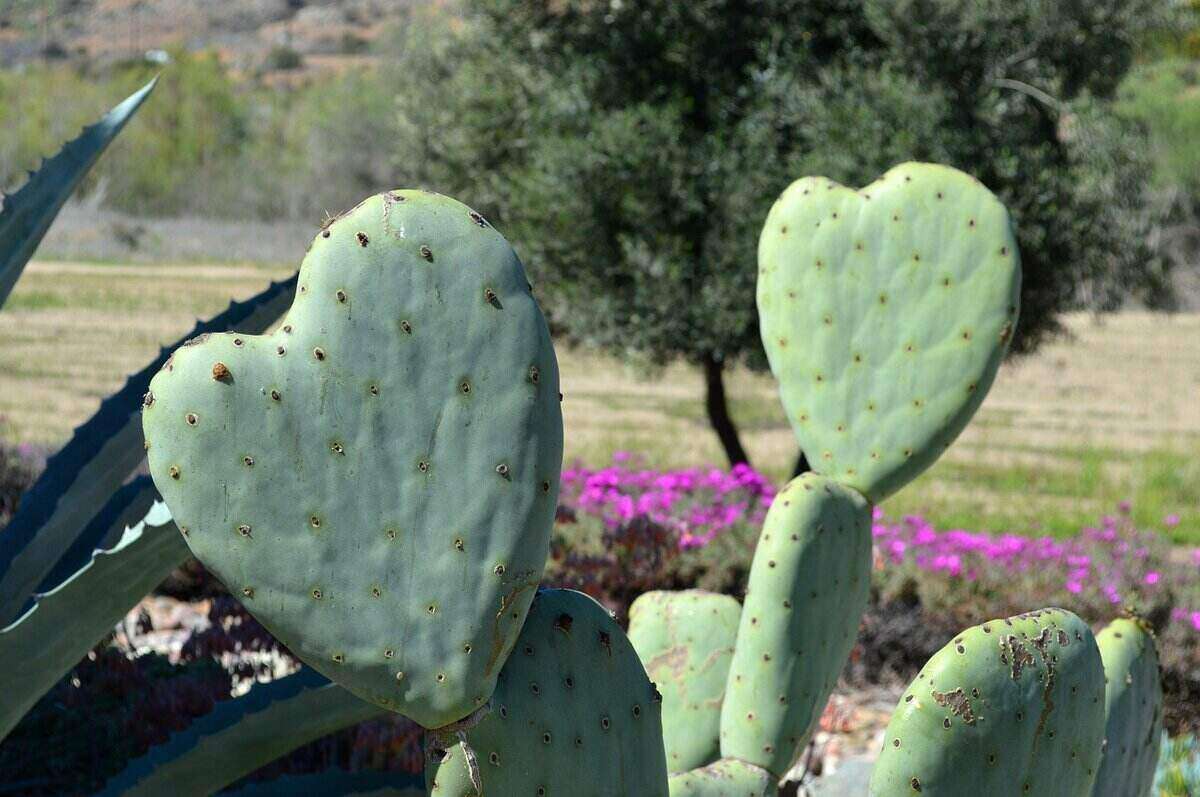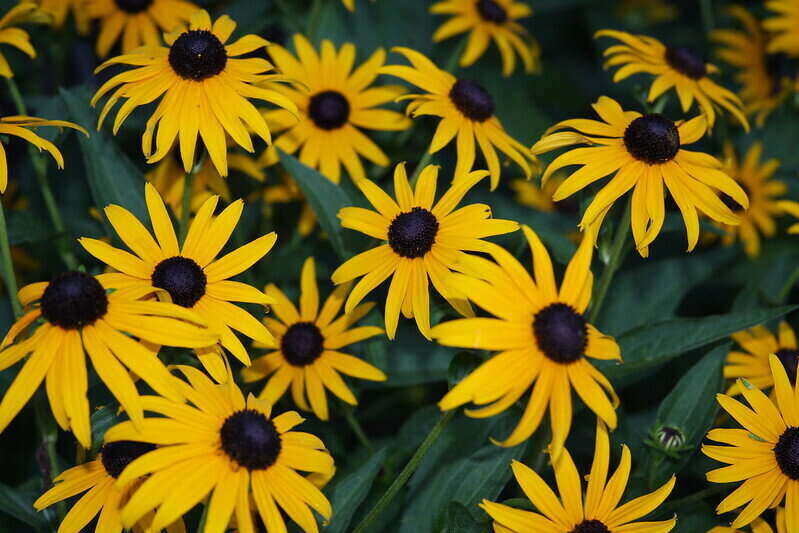
The wind won’t be the only thing blowing people away in Tulsa once they get a look at your outdoor space. Our low-maintenance landscaping tips will make your backyard the envy of the neighborhood without all the hard work.
1. Ditch grass

A white picket fence and lush green lawn might be the popular picture-perfect American home, but it’s not the only way to create a beautiful backyard, nor is it always the smartest.
What’s left out of that picture? Hours spent mowing, edging, and seeding and money spent on herbicide, fungicide, and fertilizer. The dense, lush turf we know and love can take a lot of work to maintain, and not everyone wants to spend their Saturday afternoons caring for a finicky lawn.
Not to mention, Tulsa summers can be brutal on grass. You can avoid unsightly dead or dormant patches by swapping out grass for something that won’t wilt in the summer heat.
So what do you replace it with? You have options! There’s xeriscaping, native gardens, ground cover, and more. We’ll go through each of these in more detail, so keep reading. Even if you don’t want to give up grass, incorporating some of these landscaping techniques is an easy way to take your yard to the next level.
Advantages of replacing grass:
- Reduces water usage
- Reduces or eliminates time spent mowing
- Lowers chance of fungal diseases and pests
Approximate cost: If you hire a landscaper, you can expect to pay around $1.50 per square foot for sod removal and disposal.
2. Try xeriscaping

Xeriscaping may sound like something from another planet, but it’s actually specially adapted for our climate here on Earth. It focuses on reducing water needs by combining hardscaping, native plants, and rock designs.
Components of a xeriscape:
- Rock garden: This is an area where boulders, stones, and rocks are arranged in artful designs that can act as a sanctuary.
- Native and drought-resistant plants: Think flowers, vines, shrubs, trees, and ground cover that are adapted to the Tulsa area.
- Hardscaping: Incorporate elements like an outdoor kitchen and pavers to add beauty to your landscape with no need for water.
Approximate cost: The cost of xeriscaping depends on which elements you choose to include. Rock gardens cost about $700 to install. Drought-resistant plants can cost as little as $5 per plant.
3. Native knows best

Don’t tell Mom, but it’s actually native plants that know best. After all, over time native plants adapted to the specific climate of wherever they grow. That means they require less intensive care in order to thrive.
Look for plants that thrive in Zone 7a (Tulsa’s Hardiness Zone)
Benefits of native plants:
- Attract pollinators like birds, bees, and butterflies
- Low maintenance
- Lower water bills
Native flowers include black-eyed Susans, bee balm, purple coneflower, and wild columbine.
Native shrubs include wild hydrangea, elderberry, and winterberry.
Native vines include crossvine, trumpet creeper, and virgin’s bower.
Approximate cost: The only cost is the plants themselves. Perennials range from $5-$30 per plant.
4. Go for ground cover

If you’re ready to give up on turfgrass, ground cover is a great alternative. Ground cover is any low-lying plant that spreads by a creeping pattern.
Ground cover can provide a dense, green base for your landscape without the pain of worrying about finicky turfgrass. This is a great option for Tulsa’s harsh weather or if you have a shady lawn or poor soil. Ground cover will discourage unsightly weeds, too.
Sun-loving ground covers:
- Carpet sedum
- Creeping phlox
- Faasen’s catmint
Shade-loving ground covers:
- Hosta
- Dwarf Solomon’s seal
- Wild ginger
Approximate cost: The cost of ground cover is about the same as native plants. You can plan to spend between $3 and $12 per square foot covering your lawn with ground cover.
5. Don’t miss mulch

Mulch is the most valuable player in any garden. What is it? Mulch is a material you spread on top of your soil that mimics the natural blanket of leaves and branches on a forest floor. You can use tree bark, pine needles, shredded leaves, or grass clippings.
Benefits of mulch:
- Stops weeds
- Stabilizes soil temperatures
- Holds moisture
- Stabilizes soil to prevent erosion
Mulch is especially valuable for getting your garden through the Oklahoma summer. Spread it around the base of trees, flower beds, and vegetable gardens to nourish and protect your plants.
Approximate cost: Mulch ranges from $15 to $65 per yard.
6. Heard of hardscaping?

Your landscape doesn’t just include the living elements. Hardscaping, the inorganic elements and features in your yard, is just as important. This is everything made from stone, plastic, metal, or wood.
Examples of hardscaping include:
- Pergolas
- Patios
- Benches
- Fire pits
- Walkways
Hardscaping provides aesthetic interest with infrequent maintenance. Benches and other wood elements might need annual staining. Patios and decks may need pressure washing once a year.
Adding hardscape elements is a long-lasting and functional way to spruce up your space and turn it from a backyard into a space for entertaining.
Pro Tip: Add string lights or lanterns to give your yard ambiance.
Approximate cost: The cost of hardscaping varies greatly. A patio, for example, costs $3,595 on average. Pavers cost between $1 and $15 per square foot.
7. Weave in winter interest

While you may be excited for Tulsa’s Winterfest, the cold months can seem dreary without a green landscape. There are other ways to bring your backyard to life when temperatures drop.
A winter interest plant is a plant that has some aesthetic advantage during the winter. That can mean a tree with peeling bark, a flower with beautiful seed pods, a shrub with winter berries, or colorful ornamental grass.
Plants with winter interest:
- Witch hazel
- Prairie dropseed
- Beautyberry
- Holly
- Paperbark maple
Approximate cost: Perennials cost a few more dollars than annuals, so plan to spend a minimum of $5 per plant.
The final word on low-maintenance landscaping in Tulsa
Tulsa’s changing climate doesn’t have to mean an end to a beautiful backyard. When you work with the weather, you can achieve a stunning landscape. By choosing resilient plants, functional hardscaping elements, and stress-free ground cover, you’ll be well on your way to having the yard of your dreams in the Oil Capital.
If the idea of installing new landscape features yourself sounds overwhelming, call a pro. A local landscaping company can take care of design and maintenance so you can kick back and enjoy your backyard.
Main Photo Credit: TootSweetCarole | Pixabay